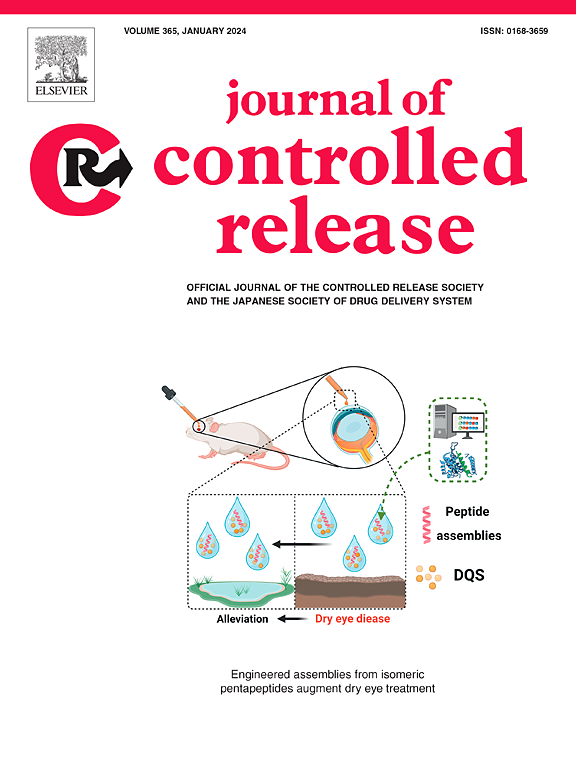Lipid nanoparticles target neutrophils to reduce SARS-CoV-2-induced lung injury and inflammation
IF 10.5
1区 医学
Q1 CHEMISTRY, MULTIDISCIPLINARY
引用次数: 0
Abstract
The need to understand key players driving pulmonary inflammation and fibrosis in COVID-19 patients leading to effective preventive strategies is imminent. Excessive neutrophil activation, including extracellular trap (NET) formation, is associated with severe COVID-19 and long-term sequelae. However, the clinical applications of neutrophil-targeting therapies are challenging due to short bioavailability and lack of cell-type specificity. This study presents a lipid nanoparticle (LNP) platform designed to deliver two established NET inhibitors, DNase I and Sivelestat (Siv) referred to as DPNLNPs, specifically to lung neutrophils. In vitro and in vivo experiments demonstrate that DPNLNPs preferentially accumulate in the lung neutrophils and degrade NETs as efficiently as the free DNase I and Siv. Additionally, administration of DPNLNPs in K18-hACE2 mice significantly inhibited SARS-CoV-2-induced NETs at a much lower dose than the free drugs and correlated with reduced lung and systemic inflammation, lung epithelium injury, and collagen deposition. Importantly, DPNLNP treatment only during the symptomatic phase of infection improved SARS-CoV-2 outcome revealing the complex role of NETs in COVID-19 pathogenesis. Together, this study serves as a proof-of-concept for adapting the LNP platform to deliver more than one immunomodulatory drug in a cell-specific manner to manage NET-associated complications in COVID-19 and other respiratory diseases.

求助全文
约1分钟内获得全文
求助全文
来源期刊

Journal of Controlled Release
医学-化学综合
CiteScore
18.50
自引率
5.60%
发文量
700
审稿时长
39 days
期刊介绍:
The Journal of Controlled Release (JCR) proudly serves as the Official Journal of the Controlled Release Society and the Japan Society of Drug Delivery System.
Dedicated to the broad field of delivery science and technology, JCR publishes high-quality research articles covering drug delivery systems and all facets of formulations. This includes the physicochemical and biological properties of drugs, design and characterization of dosage forms, release mechanisms, in vivo testing, and formulation research and development across pharmaceutical, diagnostic, agricultural, environmental, cosmetic, and food industries.
Priority is given to manuscripts that contribute to the fundamental understanding of principles or demonstrate the advantages of novel technologies in terms of safety and efficacy over current clinical standards. JCR strives to be a leading platform for advancements in delivery science and technology.
 求助内容:
求助内容: 应助结果提醒方式:
应助结果提醒方式:


